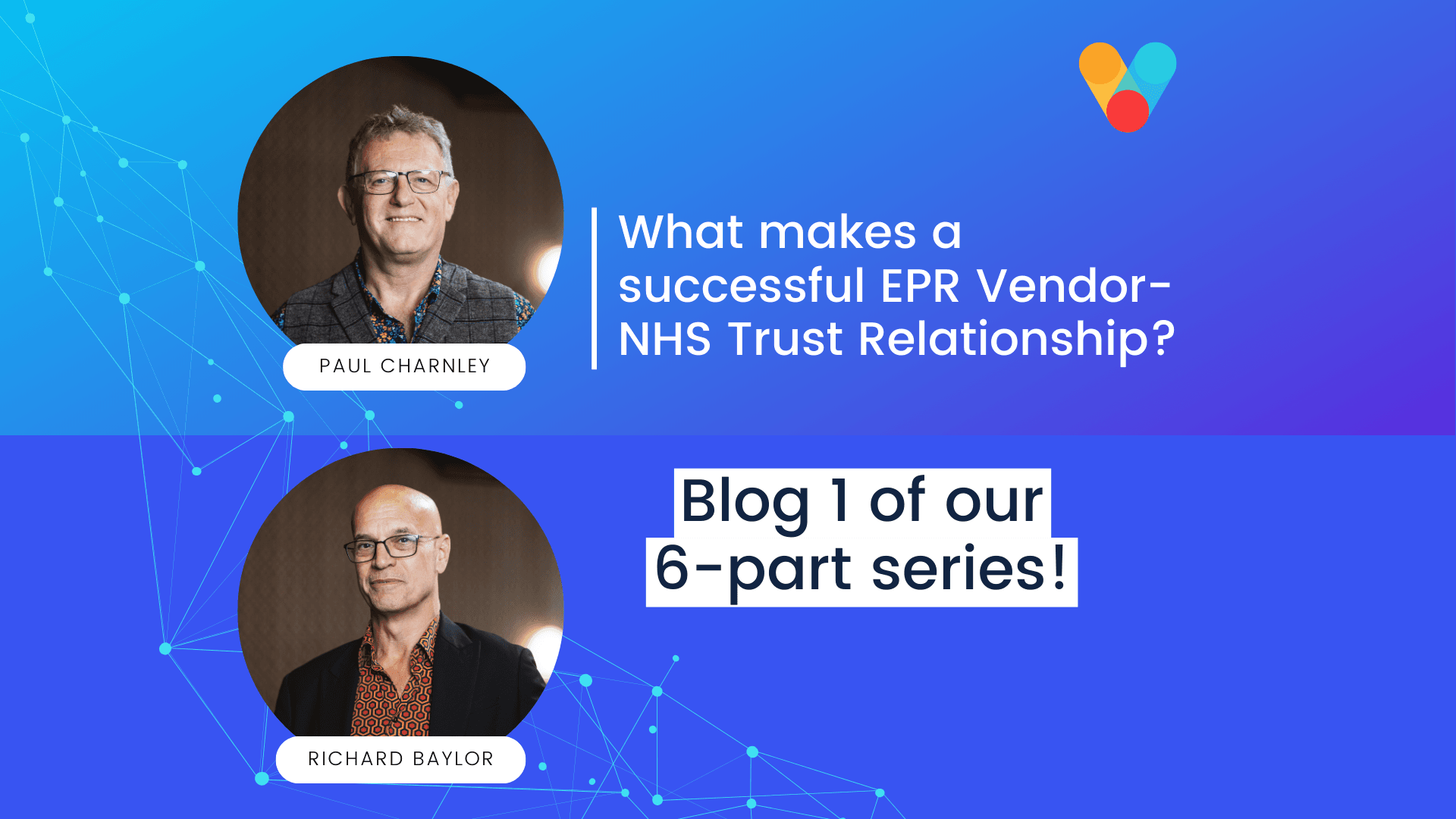
Strategic Alignment and Early Engagement in EPR Vendor-Trust Relationships
In this 6-part series, Richard Baylor, COO at St. Vincent’s Consulting and former Cerner (now Oracle) Executive, and Paul Charnley, Luminary Advisor and former NHS CIO of the Year share their insights on building strong EPR Vendor-Trust relationships. They focus on best practices and strategies for achieving long-term success, beginning with the crucial topic of early engagement and strategic alignment.
From a vendor’s perspective, Richard emphasises that the foundation of a successful relationship lies in early engagement and meticulous procurement processes. He likens the procurement phase to 'dating', where compatibility and shared values are established before formalising commitments akin to a 'marriage' through contractual agreements. Richard underscores the importance of ensuring that client stakeholders are fully involved in these initial stages. Often, Trusts engage consultancies to manage Business Case and Procurement activities, which can lead to key stakeholders not being fully involved until later stages. Including these stakeholders early on ensures that their needs and perspectives are integrated from the outset. According to Richard, strategic alignment on high-order objectives, such as innovation, is pivotal. Aligning the EPR supplier’s innovation goals with the NHS Trust’s digital leadership aspirations fosters synergy and mutual growth. Clear and consistent communication from the outset ensures alignment and prevents misunderstandings.
From the NHS Trust perspective, Paul highlights the importance of defining success criteria early to integrate EPR systems seamlessly into healthcare delivery. For Trusts, success extends beyond technical functionalities; it encompasses selecting a partner who understands and supports broader organisational goals. Paul also points out the necessity of having the supplier's delivery and service personnel involved early in the process, rather than only interacting with the sales team. This approach prevents the scenario where the client and the supplier's long-term project team only meet at the 'ceremony' of contract signature, akin to an arranged marriage. Early meetings between the client and supplier delivery/service personnel foster mutual understanding and trust from the beginning. Strategic alignment, as Paul highlights, is achieved through shared definitions of success and mutual understanding, facilitating trust-based partnerships that enhance patient care.
Key Takeaways:
• Early Stakeholder Engagement: Involve key client stakeholders early in the procurement process to ensure their needs are integrated from the start.
• Strategic Alignment: Align the vendor's innovation goals with the NHS Trust's broader objectives, especially around digital leadership, to promote mutual growth.
• Clear Communication Channels: Establish clear and consistent communication from the outset to ensure alignment and prevent misunderstandings.
• Involve Delivery Teams Early: Include the vendor's delivery and service teams early, not just the sales team, to build mutual understanding and trust before the contract is signed.
• Broader Success Criteria: Define success criteria early, focusing on both technical and broader organisational goals to ensure seamless integration of EPR systems into healthcare delivery.
Let’s talk about your needs
We’re ready to help share the responsibility on your shoulders. All you have to do is get in touch.